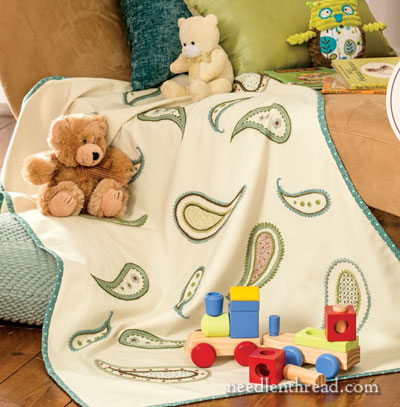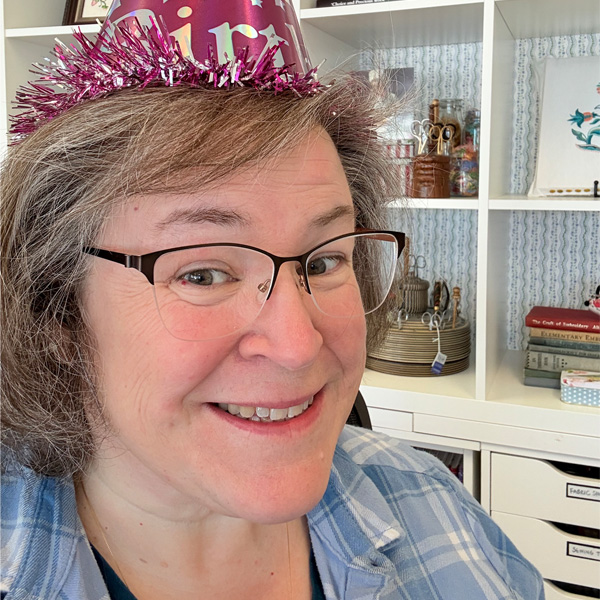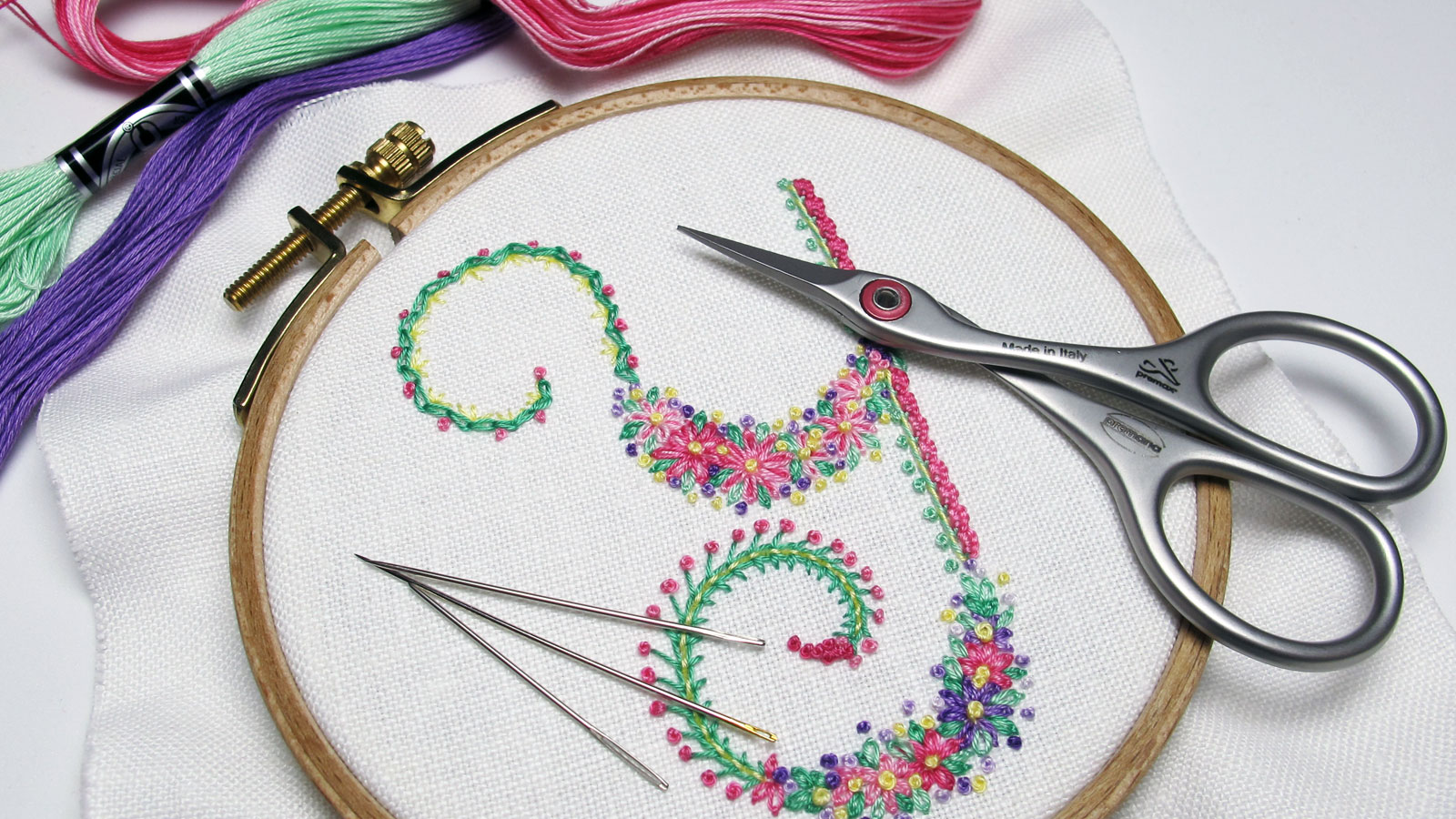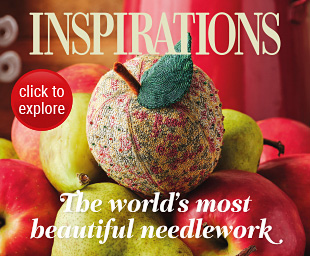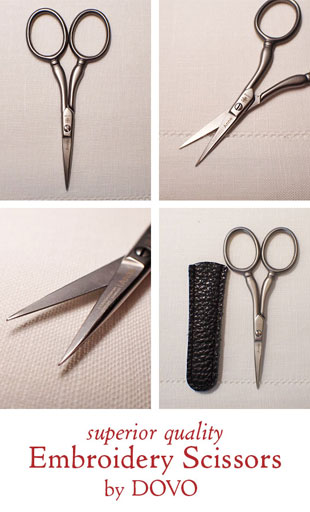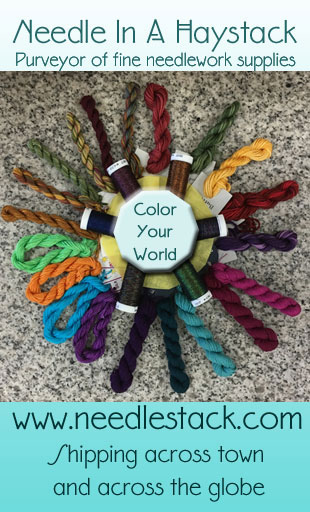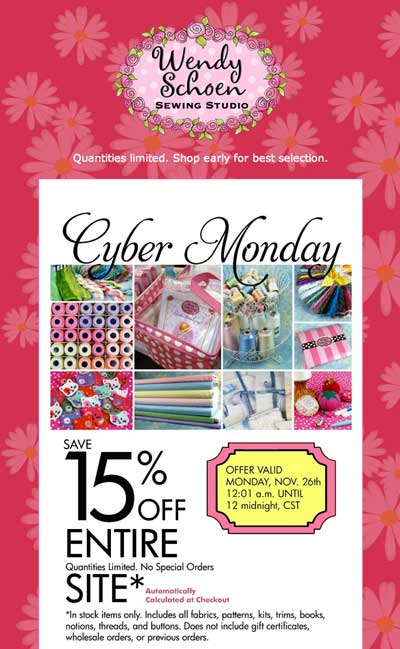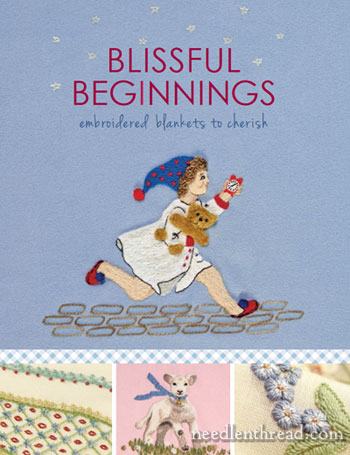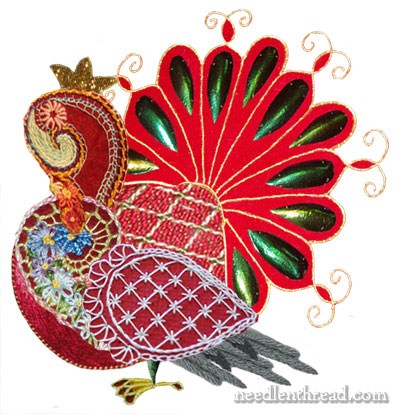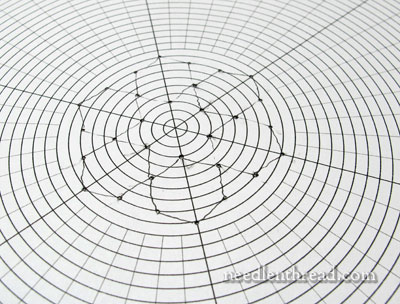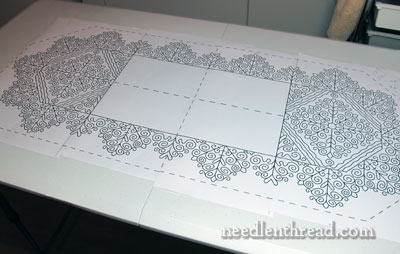Normally – practically always, as a matter of fact – the embroidery projects I work on are mounted on an embroidery frame or in an embroidery hoop. For some types of embroidery, it’s essential to use a hoop or frame.
Goldwork and silk embroidery (like the Medallion project, this goldwork pomegranate project, this goldwork and silk Agnus Dei project, the little Tudor rose, and so forth) absolutely require that the work is mounted on a taut frame. Crewel embroidery (i.e. this crewel rooster) also benefits from mounting in a frame or hoop.
There are other types of embroidery, though, that don’t necessarily need to be worked in a hoop or frame. The skilled embroiderers of Madeira, for example, worked their delicate and beautiful whitework motifs without a hoop, in their hands, with their worked wrapped around a finger to gauge tension.
And certainly, there are many situations where embroidered linens and the like – adorned with typical surface embroidery stitches – can be easily held and worked in the hand, without the use of a hoop.
Today, let’s chat ourselves up a bit about working in hand, without a hoop.
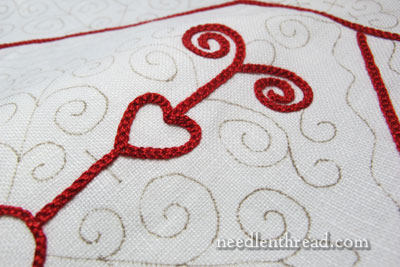 Continue reading “Embroidery In Hand, No Hoop”
Continue reading “Embroidery In Hand, No Hoop”
